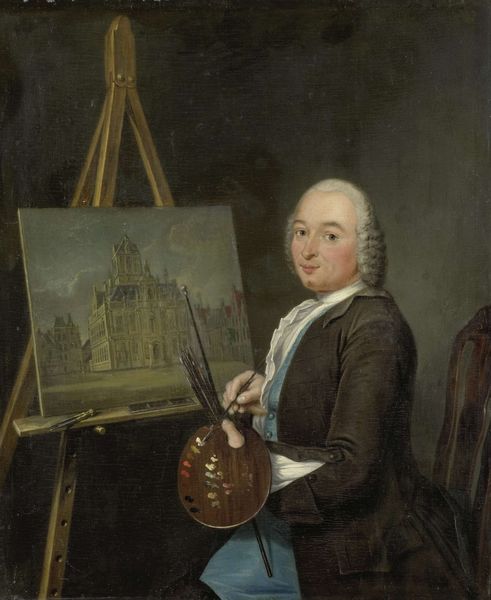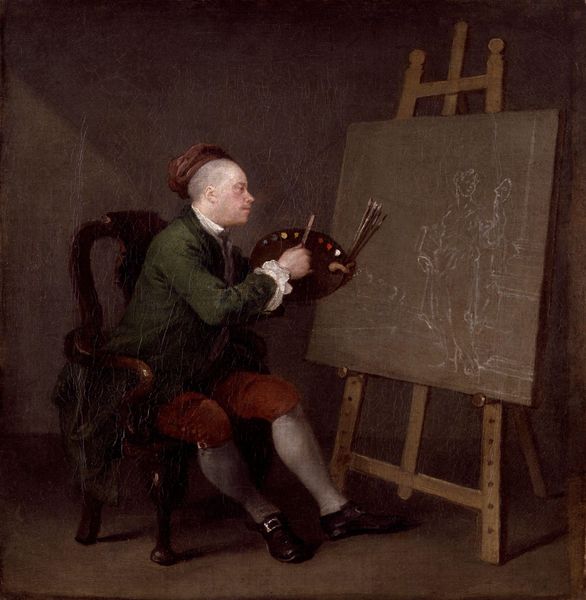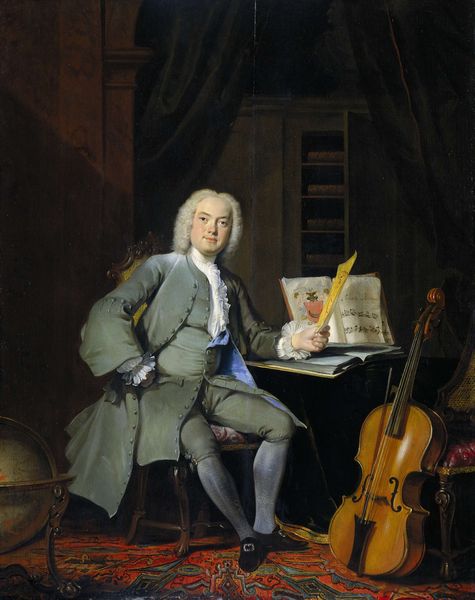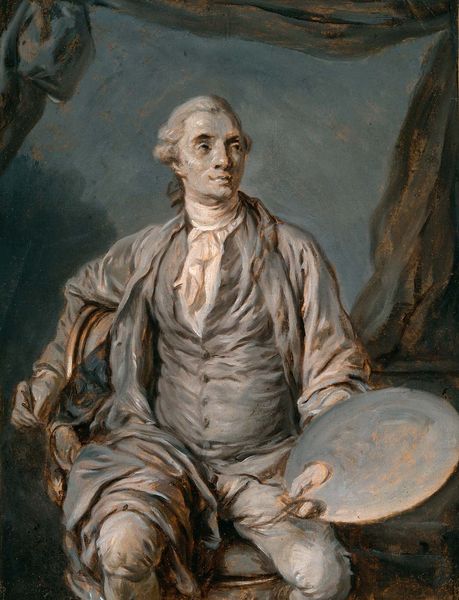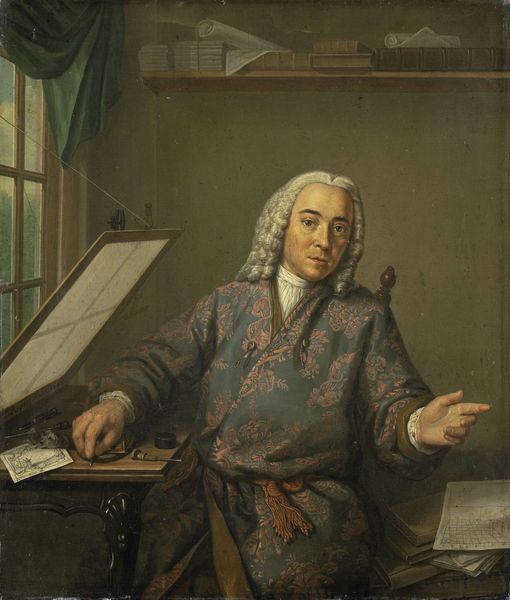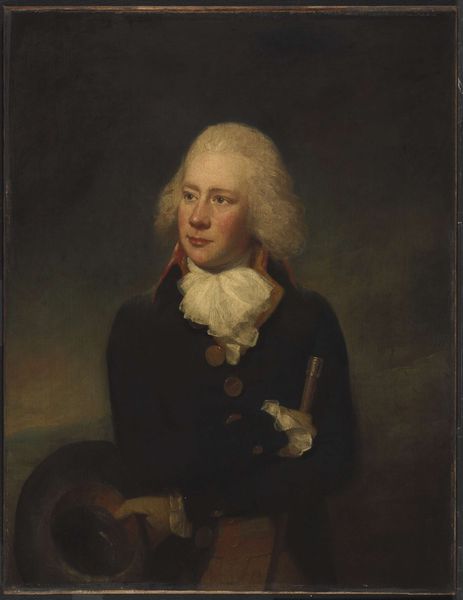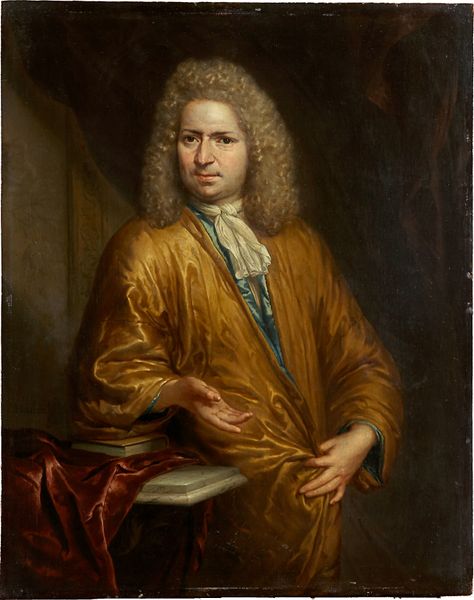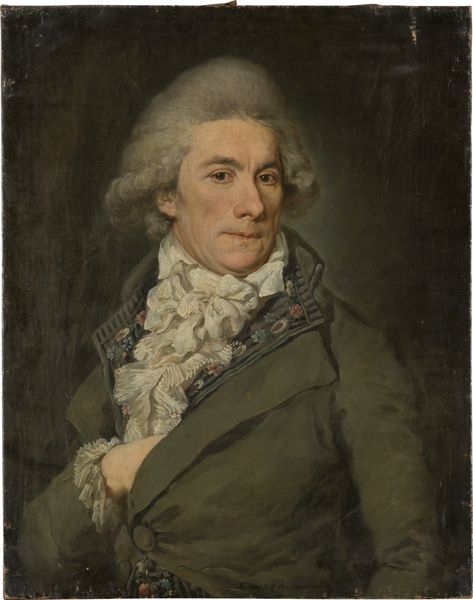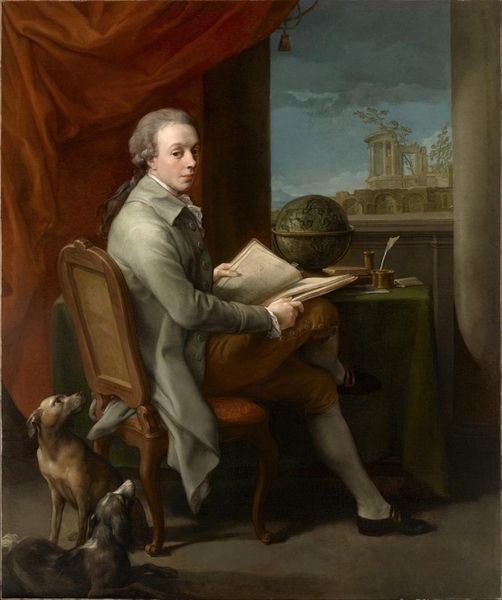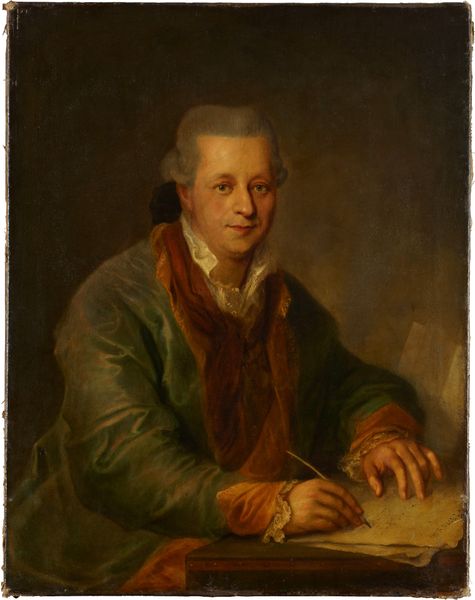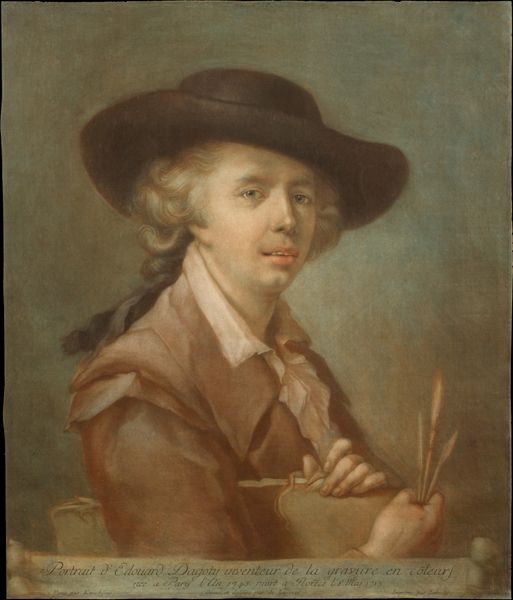
Dimensions: height 25 cm, width 20 cm, depth 5 cm
Copyright: Rijks Museum: Open Domain
Editor: Here we have "Portrait of a Painter, probably the Artist himself," an oil painting by Willem Uppink, created around 1788. It's striking how directly he gazes at the viewer, almost challenging us. What do you see in this piece? Curator: This portrait operates within a complex web of power dynamics. Consider the self-representation inherent in a self-portrait during a time when artistic patronage heavily influenced artistic production. Who had the agency to depict themselves, and how did they choose to be seen? Editor: So, you're suggesting the self-portrait is more than just a likeness, it’s a statement? Curator: Precisely. Uppink isn’t merely presenting his image; he’s constructing a narrative about his identity and his place within the artistic landscape. Notice his clothing, the tools of his trade. They signal a particular kind of professionalism and status, but for whom? For the establishment, or for a rising merchant class eager to purchase art? Editor: It’s like he's performing the role of the "artist." Almost like method acting! Curator: Exactly! And the muted palette? The staging? These choices situate him within the prevailing aesthetic of the time but also potentially speak to the limitations placed on artists navigating a system often governed by rigid standards and expectations. Who was Uppink trying to appeal to, and what constraints did he face? Considering these questions unveils a richer understanding of the artwork’s message. Editor: That reframes everything. I had focused on just the individual, but now I see the push and pull of social and political forces. Curator: These older paintings offer a fantastic opportunity to study identity. Viewing these artworks through intersectional narratives really enhances their value, even centuries later.
Comments
No comments
Be the first to comment and join the conversation on the ultimate creative platform.
